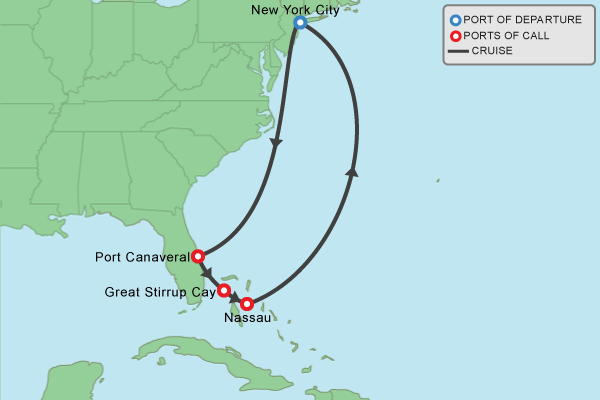私は ことしの なつやすみに つまと ニユ-ヨ-クから バハマまで クル-ズりょこうを しました。

ニユ-ヨ-クこうで クル-ズふねに のりました。ふねは とても おおきかったです。船の なまえは ノルウェ-ジアン ジェムでした。ひとが さんぜんよんひゃくにんぐらい その ふねに のりました。それから いっしゅうかん りょこうしました。白い カモメが ふねの ちかくで びっていました。そして、ふねの きてきが なりました。ブ--ン!

船の なかに レストランが おおかったですから、いろいろな ご飯を 食べました。ビ-フステ-キが いちばん おいしかったです。ときどき プ-ルで およぎました。まいばん カクテル ラウンジで ビ-ルと カクテルを のみました。そして、おもしろい バラエテイ ショ-を みました。ショ-は すてきでした。ときどき ナイトクラブへ ダンスに 行きました。おおい ひとが ダンスして いました。私たちは ダンスが あまり じょずじゃありませんが、いっしょに ダンスしました。たのしかったです。

ふねは バハマの ナッソこうへ どうちゃくしました。こうに クルズふねが さんせき ありました。天気は あつかったです。町は おおきかったです。そして、りょこうしゃが とても おおかったです。みせに めずらしい ものが たくさん ありました。つまは すてきな かばんを かいました。バハマじんは えいごで はなしました。
バハマの うみは きれいでした。そらと うみは あおかったです。そして、すなばは しろかったです。海で 泳ぎました。うみの なかで いろいろな さかなを みました。つまは バハマの うみが だい すきでした。
In this work, I used a number of kataka words. Their meanings are as follows.
ニュ-ヨ-ク New York クル-ズ cruise
ノルウェ-ジアンジェム Norwegian Gem カモメ pigeon
ブ--ン sound of a boat wistle
レストラン restaurant ビ-フステ-キ beefsteak
プ-ル pool カクテルラウンジ cocktail lounge
ビ-ル beer カクテル cocktail
バラエテイショ- variety show ナイトクラブ nightclub
ダンス dance バハマ the Bahamas
ナッソ Nassau (capital city of the Bahamas)
カモメ is the name of bird, and ブ--ン is onomatopoeia. Other words are foreign words or names. I tried to use these kataka words in order to evoke exotic feelings.
ニュ-ヨ-ク New York クル-ズ cruise
ノルウェ-ジアンジェム Norwegian Gem カモメ pigeon
ブ--ン sound of a boat wistle
レストラン restaurant ビ-フステ-キ beefsteak
プ-ル pool カクテルラウンジ cocktail lounge
ビ-ル beer カクテル cocktail
バラエテイショ- variety show ナイトクラブ nightclub
ダンス dance バハマ the Bahamas
ナッソ Nassau (capital city of the Bahamas)
カモメ is the name of bird, and ブ--ン is onomatopoeia. Other words are foreign words or names. I tried to use these kataka words in order to evoke exotic feelings.








